How many people do you know who knew Brahms?
mainIt’s 120 years ago to the day that the old boy breathed his last.
So: a good time to play a game I last tried out with Menahem Pressler and the Emerson Quartet.
A hundred and twenty years is not that long ago.
How many people have you known who saw Brahms alive, shook his hand, exchanged a greeting?
In my case, just one: my neighbour, Eleanor Rosé.
Plus quite a few who knew his at one remove – London musicians who played with Felix Weingartner, for instance.
Name yours.
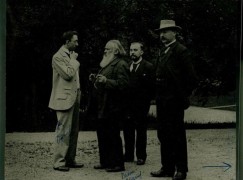
This is Brahms shortly after Clara Schumann’s funeral.

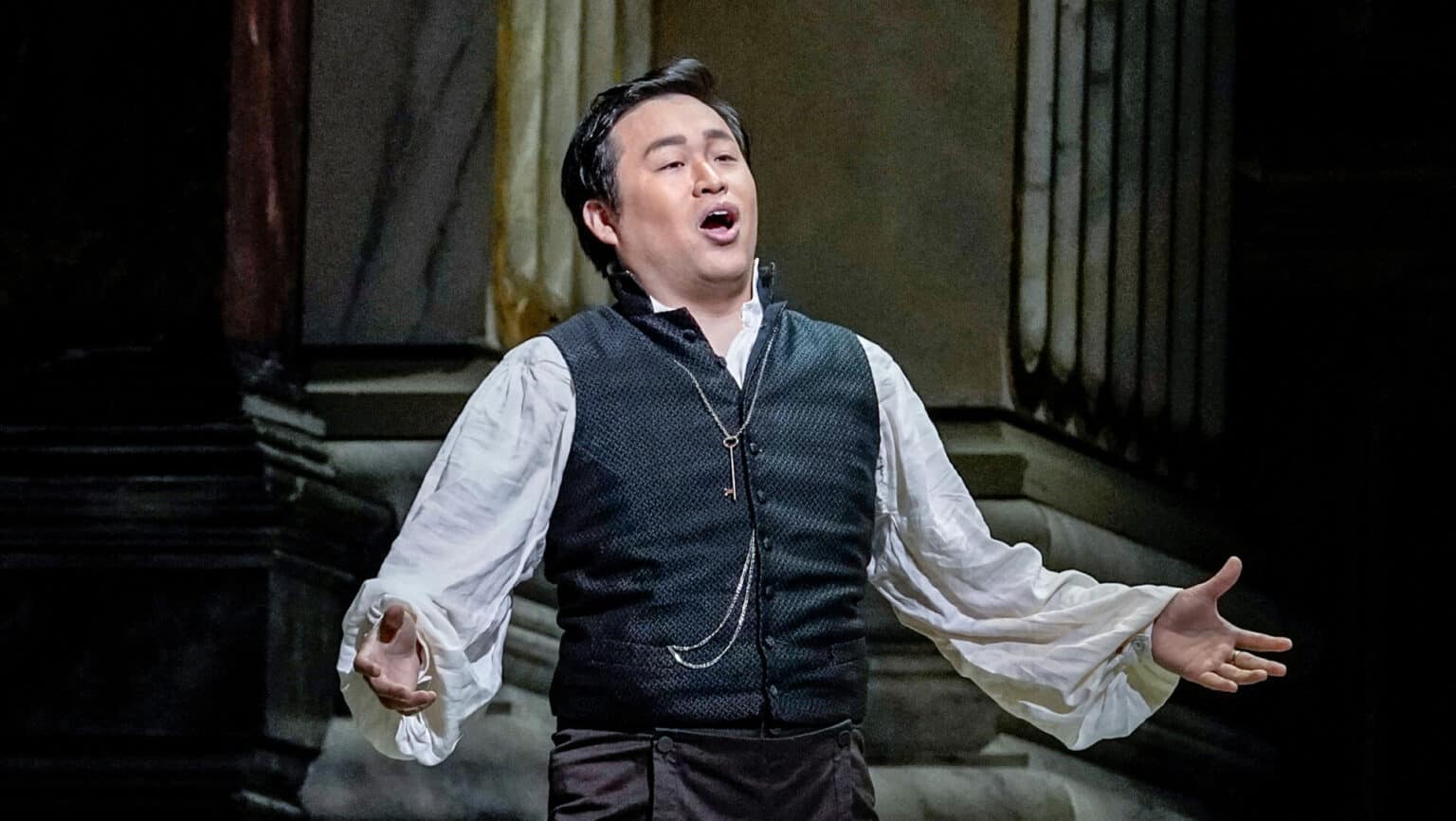
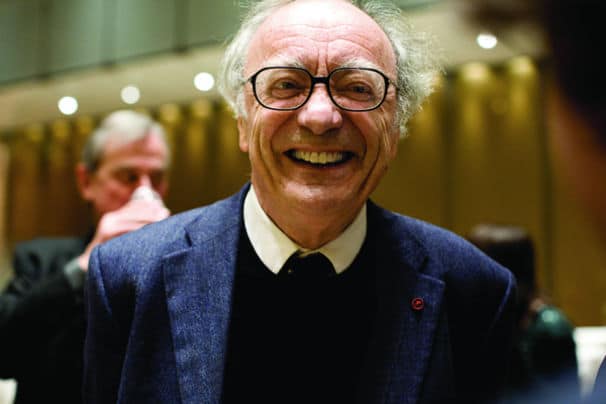
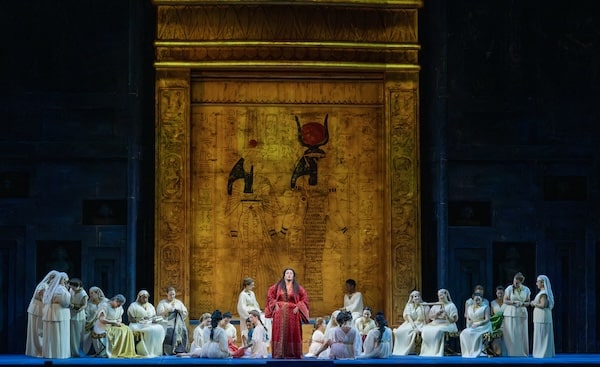
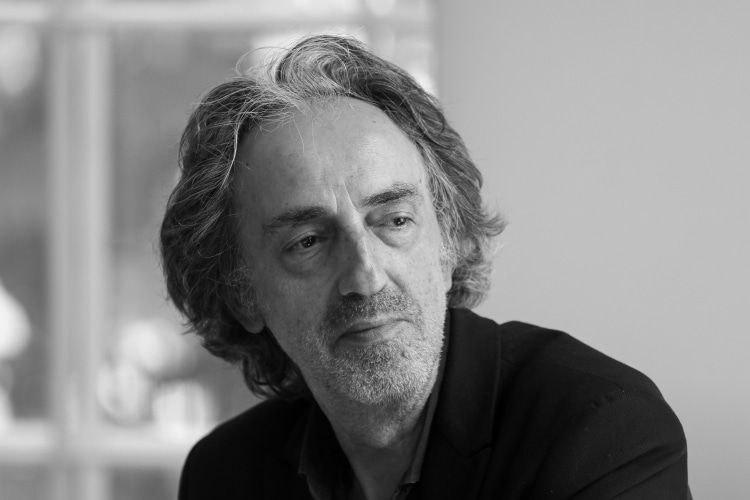
One of the great musical minds of a relatively recent past indeed, a composer entirely at the other end of the spectrum of how generally is thought about contemporary music today. For that very reason, Brahms has become interesting again, in his foresight about the classical music culture:
http://johnborstlap.com/brahms-the-progressive/
http://subterraneanreview.blogspot.nl/2016/09/an-anti-historicist-symphony.html
Wonderful; thank you, John. I’ve just finished reading Jan Swafford’s excellent biography of the great composer and one thing stands out in blazing colour: Brahms knew his audiences and largely composed music he knew they would appreciate. He found acceptance and recognition in his own lifetime.
Yes, but without making any compromises in his idiom which has subtle complexities – but always remains accessible. The complexities found some resistance though, and many professionals in music life wholeheartedly disliked his music for being too dense, and dull – no romantic, sensationalist frills. Tchaikovsly hated it, although he much liked Brahms the person which he regularly met at music festivals. Yes, I know the Swafford biography, great book.
And I just loved your comment about Kleiber’s performance of Brahms 2nd Symphony with the VPO. During the whole performance I kept thinking of Brahms out there in the cold of Ressel Park, on that lonely plinth, facing the Musikverein!!
That performance is so good…. almost too good to be true, but it really happened.
Hans Gal, who, as a child sat on Brahms’ knee.
I asked Hans about that: “There’s a rumour that you played the piano to Brahms; is that true?”
“What do you expect? I was only six when he died.”
Pressler certainly knew Enescu who saw Brahms alive: Pressler played Chopin’s 2nd piano concerto under Enescu’s baton in Washington – a National Symphony Orchestra concert from 1948. Enescu knew Brahms: he played under his baton as a student in Vienna. Moreover, during his studies Enescu lived in Joseph ‘Pepi’ Hellmesberger Jr.’s house which was close to that of Brahms. Hellmesberger was a good friend of Brahms, who often visited Pepi’s house.
Whether Enescu shook Brahms’ hand, I am not so sure because he was a teenager at that time…
Pierre Monteux, if I am not mistaken, also knew Brahms. So anyone who knew Monteux has this connection.
Fascinating…..
Even more fascinating is that there are (live) recordings of Enescu conducting or playing Brahms, although very few were released. Oscar Fried is listed as a conductor who knew Brahms and who has recorded the master’s music, but he’s not the only one. In fact Monteux may be another one, and is almost as poorly represented as Enescu in this repertoire.
Which is regrettable, all the more since Monteux’ real great love was the German composers among which especially Brahms. His reputation rests on the early performances of Ravel, Stravinsky etc. but he only took them on because he needed to make a career and was still very young. But he was so successful in these that it stuck to him all his life. I have a recording of Brahms IV by Monteux and it is absolutely superb: radiant, deep, and fluent.
Although few studio recordings were made, there are quite a few live publications available with the Boston, San Francisco, Concertgebouw orchestras featuring all the major orchestral works(all concertos and symphonies, Haydn variations, tragic overture, Academic festival..). Monteux did meet Brahms as a member of the Geloso quartet(viola). The ensemble played for him and he was delighted, told them that German quartets often played his music too “heavily”…
I am pretty certain that Enescu shook hands with Brahms. Brahms came to watch the performances of his School Symphonies.
Sir Robert Mayer, for whom I worked back in the 1970s met Brahms when the composer came to Mannheim. Sir Robert was a small boy at the time.
This should be expanded to a six-degrees-of-separation question. I’m pretty sure i’m connected 3rd hand, as it were, having met John Cage (a possible Schoenberg-Brahms connection), Leonard Bernstein (a possible Walter-Brahms link) and Charles Rosen (a definite Rosenthal-Brahms connection).
My old teacher used to say that all of us violinists could trace our musical family tree, pupil to teacher, back to the common ancestor Corelli. It’s a thought that has always stayed with me.
And Corelli invented it all by himself. (?)
Not everything, but Corelli represents most of the good things in the violin business as a composer and as concert master as well. The Germans of his time like H.I.F. von Biber were interested in scordatura, dissonances and other modernist eccentricities that came back much later, and the French could not do more than dance music.
I had a “Cyclopedia” of music once upon a time that listed the teachers of everyone they could find information on, and then those teachers’ teachers, etc. It was interesting because you could read about all kinds of people who were moderately well-known violinists or pianists in the 19th or even 18th centuries, not famous as composers and not necessarily titans of the time. In this book, I was able to trace the teacher-student line from Heifetz back to Corelli (although I don’t remember all the names in between). As I recall, it didn’t list Corelli’s teacher/s, so that was where the search stopped.
Played with a violinist who played with Rachmaninoff and whose mother was introduced to Dvorak.
As a child Wilhelm Backhaus met Brahms. My piano teacher had met Backhaus.
As a teenager, I saw Rubinstein in rehearsal in his very last run of concerts. I ran back after and gently shook his hand. And he shook Brahms’. So that gets me close for a guy not yet 60. There have to be many others, though, who knew Rubinstein. I’m not that unique and it’s the path of least resistance to Brahms.
That’s good!
“And he shook Brahms’ ” Any evidence to support this? As far as I remember, there’s nothing of the kind in Rubinstein’s autobiography…
My Grandmother’s voice prof at Juilliard was Anna Schoene-Rene who was a friend of Brahms.
Rodney Friend states on his website that when leading the London Symphony Orchestra in the early 1960s he played the Brahms symphonies under Carl Shuricht (1880 – 1967) – who had studied and worked closely with the composer
Since Brahms died in 1897, he must have been very young, it is a bit unlikely. I believe Brahms was no longer very active performance-wise in his last years and preferred to ‘enjoy’ life on a basic level: drinking, walking, reading Schopenhauer & being sombre.
Yes, and since Schuricht grew up in Gdansk, Berlin and Wiesbaden, it seems rather unlikely that he “studied” with Brahms. But Brahms visited Wiesbaden occasionally, so it is certainly possible they met.
I know this doesn’t directly apply, but a distant relative of mine was supposedly beaten senseless by Van Gogh.
Great! You can easily imagine that, according to the paintings.
“Lloyd George knew my father….”
Ida Haendel is another artist, still happily very much with us, who must surely have met a few people who knew Brahms in the earlier part of her career
Well, Enescu was one of her teachers… Likewise, Ivry Gitlis was another Enescu pupil – who in this way has his own Brahms connection.
In this connection, I once read a story told by someone [whose name I have forgotten] who had grown up in Vienna. His father once took him to a Kammermusikabend at which Brahms was the pianist in one of his piano quartets or quintets. As they were waiting for the concert to begin, his father turned to him and said ” Remember- when the strings begin to play, listen very carefully, because once Brahms begins to play you won’t hear the strings any more….”
Yes, that seems to have been a problem with B. There is also the story that in a rehearsel with a chamber work of strings and piano, maybe the same as in the story, that the cellist complained: ‘I can’t hear myself!’ upon which Brahms said: ‘Lucky you.’
It’s quite possible that there are living connections through the Schumann family.
I knew a man whose grand-mother was Pauline Viardot who of course knew Brahms, Rossini, etc.
This story is apocryphal and unlikely , but I love it anyway. Heard this from the late Elliot Galkin, Baltimore Sun music critic who studied at the Paris Conservatoire: Brahms and Debussy had a meal together. Brahms opened a can of sardines, ate them, drank the oil, and wiped his oily beard on his sleeve. Debussy was repulsed and left quickly. So Debussy knew Brahms 🙂
There are vague shadows of rumours that Debussy, when young, met Brahms in Germany, but there is no real evidence. In his younger years, when still entirely unknown and exploring gentle but superb salon music, Debussy went a couple of times to Bayreuth – paid by a rich acquaintance – and it is theoretically possible he somehow, somewhere, met Brahms who in the seventies and eighties travelled around to give concerts. Any young composer would want to meet the Great of his time.
But real is the story of Debussy meeting up with R. Strauss, at the house of his publisher Durand who had invited the two composers for lunch in 1906 when Strauss was in Paris to conduct a couple of concerts. This happened because Strauss was very keen in meeting the newly-famous rebellious composer of Pelléas. But over lunch, the extravert Strauss reported extensively about his efforts to set-up a royalty foundation in Germany to create a better financial position for contemporary composers, and he was very proud of it. But Debussy, who had not the slightest idea how these things worked and was completely ignorant about royalty systems in France, fell silent and directed his thoughts to unknown, far-away lands. (Source: Jacques Durand’s memoirs, 1924/25)
My great-grandfather met Brahms.
In mathematics and the sciences, the “family tree” of a researcher is regarded as both interesting and important, and there are a set of websites which make it possible to keep track. Here, for example, is my own:
https://academictree.org/chemistry/tree.php?pid=101506
It shows my thesis advisor, both my post-doctoral mentors, their scientific descent [and therefore, of course, mine] and my doctoral and post-doctoral students. If there is no such site available for performing musicians, there ought to be.
So you’re the great-great-grandstudent of Niels Bohr. That’s cool.
All the other folks I’ve never heard of.
I have heard Horszowski several times. He played for Brahms as a child, some biographs say.
The father of my conducting professor at Indiana University, Thomas Baldner, knew Brahms.
As an IU student, I rented a room from stage director Hans Busch (son of Fritz Busch…so much history there). When I was asked to conduct Hindemith’s Cello Concerto, I went home and asked Hans if he knew the concerto. He said “No, but I knew Hindemith!”
I (along with many others) studied with Maria Curcio, who in turn studied with Schnabel. Schnabel met Brahms on a few occasions through his composition teacher Mandyczewski. I suspect there are still a handful of people alive today who met Schnabel as he died as recently as 1961.
Artur Schnabel died in 1951.
One of Schnabel’s most famous pupils, still very much with us, is Leon Fleisher, himself a great pianist and prolific teacher in his own right.
When I was a student in college back in the late 70’s there was a centenarian who played in the orchestra I was in who had met Brahms as a child. I think the most surprising thing was that she could still play the violin at a 100.
In the late 1950s I was sitting on stage of the main hall at the Sydney Conservatorium during rehearsal of the Sydney Symphony Orchestra. As a junior member of the horn section, I noticed an old man sitting in the auditorium – it was the Australian/New Zealand composer, Alfred Hill.
My teacher, and then principal hornist Alan Mann said: “As a student in Germany, that man knew Brahms”….
I interviewed Hans Gál, mentioned above, and I several times interviewed Sir Robert Mayer, who as a boy missed being chosen to play for Brahms, but as a consolation prize sat next to him at the concert.
I met Robert Stolz in 1974 – He was 94 and died a year later – who used as child to pounce on Brahms knees…
pounce or bounce? I need to know!
As a kid in the 1960s I played cello in my city’s youth orchestra. We had two associate conductors who each conducted a work at each concert. One was Mr. Muelke, a sweet, silver-haired old German man. At one rehearsal, he told us that when he was four years old at a concert with his father, he asked his father who was “that man” on the stage. His father said, “Brahms.”
Does this count: I was at the used book store run by the San Francisco Library about 20 years ago and came upon a big stack of old piano music. Several of the volumes bore the same pre-zip code address-sticker (before 1963), causing me to assume it was from a deceased pianist/teacher. One thin volume, “Musica antica italiana del Repertorio di Alice Barbi,” caught my eye, as I recognized that name from reading about Brahms. I bought it for the “$1 as is” price. It bears a delicate handwritten French inscription thanking “A. Gutmann” for his help at concerts was signed by Barbi, dated 5/3/91. In my mind, the hand that wrote on the cover of that little volume was the same one that rested on the arm of Brahms as they strolled the Prater in that famous photo.
I worked for the late, great Sir Robert Mayer at Youth & Music from 1978-1981 in their London offices in William IV Street (accessed via rickety lift above Chatto and Windus!). Working for a gentleman who celebrated his 100th birthday in June 1979 was certainly an experience as he had a wealth of stories – including how he played a piano piece of Brahms to the composer when he was about 10 years old. He recalled the gentleman being enormous and how he felt only slightly intimidated by the composer but fascinated with his generous beard! Colleagues at Youth&Music, the late Alan Fluck and Christopher Evans, would heartily encourage the stories….then prompting for Alan to share his many Britten stories!
I can see above someone says he didn’t manage to play for Brahms – guess we will never know the truth now….
Do past lives count? If so I’ve met him personally.
No, that was me.
Norman, can we play this game on a new thread with Mahler? I’d be very curious!
Sandra, the truth is as I wrote above. Sir Robert told me the story more than once.
Yes, I knew a man who knew Brahms. I was in my teens, working in the library of The Philadelphia Orchestra. The gentleman, of course quite old at the time, was the music-loving son of a pharmacist. He told me about delivering prescriptions to Brahms. I asked where he would meet him and he said “In Hanslick’s apartment.” You can imagine the effect that had on me, only 18 at the time! This gentleman also walked through the Stadtpark with Mahler, and owned one of the facsimiles of the Mahler 10th sketches published by Alma Mahler. He was given it as a gift by the mayor of Vienna, and later gave it to William Smith, assistant conductor to Ormandy, with whom I shared a desk for five wonderful years. I’m now writing a memoir about my half century in music!
Great story.
What’s with Brahms and babies sitting on his knee?
He was department store Santa during the holidays.
“Aimez-vous Brahms?” F. Sagon
In French love stories, mentioning Brahms is the first signal of grave disaster in the pipe line.
I had dinner in Chicago around 1970 with Rudolph Ganz, who in turn had had dinner with Brahms – and played for Liszt. Unfortunately, he had recently suffered a fairly major stroke, and so the reminiscences were less illuminating than they would have been a year or two earlier.
@Jaybuyer: Brahms maintained an irascible public face, especially in later years, but he was very approachable to children, who might encounter him at outdoor cafes and parks, in Vienna or summer retreats. (He was all for sincerity.) Gave em candy, chatted up the nannies. Later they be told who Herr Brahms was, or had been.
I listened to a cd of the four symphonies conducted by a man who met Brahms under instructive circumstances, a true window on the past. This was Felix Weingartner (1863-1942) who had conducted the B Phil in the 2nd on a Vienna visit in the early 1890s, Brahms in the audience.
The composer had been very dubious about this new idea of a traveling orchestra but he loved what he heard and appeared on stage at the end and embraced Weingartner as if to announce, This is how it should be done! — the whole series of actions rare for Brahms.
Weingartner recorded the cycle with the London Symphony in the 1930s, concluding with the 2nd in 1940. The metal masters were sacrificed to the war effort but more than enough remains; there have been several reissues.
The tempi are Very Fast!
Very interesting….. and ponderous, heavy Brahms is a misconception. The orchestral pieces should be played with a reduced string section to balance the sound, they are structurally thought of as classical works, with the Beethoven sound in the ear. And the tempo should always be flowing, ‘horizonal’, and not down-beat, ‘vertical’.
The Meiningen Hofkapelle, the orchestra central to our knowledge of historical performance practice of Brahms, would be thought of by some today as a chamber orchestra. The image at Wikipedia gives a good idea of its size, as well as of its platform layout — divided violins, cellos (and double basses!) in the middle, winds and brass around the outskirts.
https://upload.wikimedia.org/wikipedia/commons/2/2c/MeiningerHofkapelle1882.jpg
Even more important is a monograph by Walter Blume (Brahms in der Meininger Tradition) about his teacher and friend, conductor Fritz Steinbach, who continued the Meiningen performance practices current at Brahms’ time. I read it once decades ago when I was in college and what has remained with me through the years was its continued insistence on the observation of the multitude of Brahms’ short-term dynamic markings (such as hairpin crescendi and decrescendi). These are often lost in the big-orchestra performances of recent decades (e.g. Karajan).
I see that the Blume book has been translated into English as part of a dissertation and is freely available online. It is a MUST for those interested in late-romantic orchestral performance practice.
https://digital.lib.washington.edu/researchworks/handle/1773/15510
That is a fascinating dissertation…. confirming the idea that a smaller string group is better for Brahms than the large usual one – unless the orchestra is so good that the string session can play as lightly and transparently as a small group, which is possible. A good string group can play in any style and in any degree of weight. (C.Kleiber doing Mozart and Brahms with the VPO, Zsell doing Mozart with the Cleveland.)
My PA Sally here says that when she was a kid, she played with the daughter of her neighbour who was a grumpy man with a missing ear, who regularly locked his children up in the barn in the garden for being too noisy. He had a sister who lived in Denmark, who corresponded with an old schoolfriend of hers who lived in Ascona but who had had double bass lessons in the twenties from an old teacher, Antonio Luigi Canaponi, who had studied in Vienna in the 18nineties, where he lived as a student in the Karlsgasse. One sunny but rather cool day in September, on his way to his weekly lesson, carrying his instrument, he accidentally hit Frau Truxa with it who had just come out of the appartment building of nr 4, where she had been Brahms’ housekeeper for many years. I don’t know whether this story might be a contribution or not, but I give it here anyway.
I took a sit at dinner table in palace of Duke of Saxson in Meiningen ,Germany that J.Brahms and Clara Schumann sat, Met a lady that was related to the Duke, that was patron of musicians.
I’ve played under Leif Segerstam, who sometimes thinks that he’s the reincarnation of Brahms….does that count?
😀 😀 😀
Eugenie Schumann (youngest daughter of Robert & Clara) wrote her memoirs based on the family’s relationship with Brahms. She had piano lessons with him. Eugenie died in 1938, so likely there are a few out there that knew her.
Well then how about Marie Soldat (1863-Sept 30 1955) who met Brahms at the age of 15 as an aspiring violinist. He turned her over to Joachim who returned her in time to become the first female to play his violin concerto, under Brahms baton, and this at a time when it was generally considered just about unplayable. He called her “my little soldier” and took her out afterwards to an afternoon of ice-cream, riding the carousel, and a show. (The German-speaking world was indeed a patriarchy but differed from others in the belief that talent deserved all the scope it could handle, even if embodied in a female, hence Clara Wieck (Schumann)’s emergence almost 50 years earlier.
This was prelude to a life in music, as soloist, founder of the all-girl Soldat-Roeger quartet, and as teacher., Now There was someone who must have preserved a sense of him, across more than 75 years and into a future he could never have imagined…
The bit about Marie Soldat is rather garbled. She first met Brahms at Pörtschach, where she gave a joint concert with him and a singer, and later visited him under quite amusing circumstances, playing the Mendelssohn Concerto with him on Joachim’s violin, the first time she had played a full-sized instrument. She gave her first Brahms Concerto performance with Joachim in Berlin, with Brahms present, and went on to be famous for it, but never actually played it under Brahms’s baton. I don’t know about the ice cream etc. but that would have been after the performance with Joachim. I wrote a long article about her years ago and have added to it over the years. Could send it to you if you’re interested.
Thanks for the corrections! I’ll hunt down my source for this and be in touch.
My teacher, Mme. Isabelle Vengerova, met Brahms at Leschetizky’s villa, where Brahms attended the Wednesday classes ( and stayed for the sumptuous after- suppers!) in Vienna somewhere in the early 1890’s. She performed as chamber pianist in much of his music while teaching at Curtis.
A recently-discovered distant late cousin of mine is said to have played piano duets with Brahms in her youth. Sara Benedicts was professor of piano for forty years at the Amsterdam Conservatoire, court pianist to the King of the Netherlands, and the mother of the pianist, composer and close friend of Britten and Pears, Henriette Bosmans. Full details on request.
Changing from music to architecture, I knew John and Ati Johansen as neighbors in upstate New York. Ati probably did not meet Mahler, but her uncle/adoptive father was Walter Gropius.
In my late teens i’m at Alma Mahler twice. She sculpted a bust of my grandfather, Rabbi Jacob Sonderling. I have the patina plaster cast. The original is at the Hebrew Union College at USC. My grandfather came to the United States on the same boat as Bruno Walter. They corresponded and we have the letter. My grandfather Was connected with Ernst Toch, writing the words to his cantata for bitter herbs. He also commissioned music from Arnold Schoenberg and Erich Korngold.
You mean: Anna Mahler
My first words above were I met Anna Mahler
My cello teacher was Arthur Storch, who had played bass in Sous’s band. One day he mentioned that as a boy he had once seen Brahms. This was in the early 1960s. It was in Breslau, and Brahms had asked if he was hungry, rhen gave him a sweet from his famous coat pocket.
Brahms was in Breslau twice, once to accept an honorary degree from the university that made him “Doktor Brahms”, and once to deliver his “Academic Festival Overture” as thanks for it.
Musical Times 1933 has an article where Weingartner describes his encounters with Brahms. Interestingly also his gradually changing opinion of
Brahms’s music